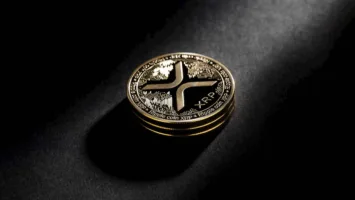Ethereum (ETH), the second-largest cryptocurrency by market capitalization, is preparing for a major upgrade that will enhance the performance and efficiency of its staking nodes. The upgrade involves introducing a new data structure called “Verkle trees”, which has been eagerly awaited by the co-founder of Ethereum, Vitalik Buterin.
Buterin explained the benefits of Verkle trees in a post on social media platform X, where he said:
I’m looking forward to Verkle trees. They will enable stateless validator clients, allowing staking nodes to run with near-zero hard disk space and sync nearly instantly – far better solo staking UX. It is also good for user-facing light clients.
Verkle trees are a type of Merkle tree, a data structure that allows for the efficient verification of large sets of data. Verkle trees optimize Ethereum by reducing the storage and processing of the state data nodes without compromising the network’s security and validity.
In a blog post, Buterin further elaborated on how Verkle trees work and what they can enable:
Verkle trees are a data structure that can be used to upgrade Ethereum nodes to stop storing large amounts of state data without losing the ability to validate blocks.
By using Verkle trees, Ethereum nodes can become stateless, meaning that they do not need to keep track of the entire history and current state of the network. Instead, they can rely on cryptographic proofs generated by Verkle trees, which can be verified quickly and cheaply.
How Will Verkle Trees Affect Ethereum Future?
The integration of Verkle trees is expected to be a game-changer for Ethereum, increasing its scalability, security, and decentralization. The digital asset community on X was excited about the prospect of Verkle trees, with one user commenting that “the prospect of near-zero hard disk space requirements and almost instant syncing is a game-changer.”
However, Verkle trees are not the only upgrade Ethereum is working on. The network is also planning to transition from a PoW consensus mechanism to a PoS one, making it more energy-efficient and sustainable. This transition is part of the Ethereum 2.0 roadmap, which aims to make Ethereum more scalable, secure, and interoperable.
One of the key components of Ethereum 2.0 is the ‘Dencun upgrade, ‘ which will introduce shard chains and parallel sub-networks that can process transactions faster and cheaper. However, developers need more time to test and implement the Dencun upgrade, so they have delayed it until 2025.
Verkle trees can improve the performance and efficiency of ETH nodes as a crucial interim solution, while Ethereum 2.0 is still under development. Buterin expects to deploy Verkle trees on ETH in late 2024 or early 2025.
Related Reading | Congressman Hill Tackles Cryptocurrency Risks In Recent Report
Furthermore, the author’s views are for reference only and shall not constitute investment advice. Before purchasing, please ensure you fully understand and assess the products and associated risks.




Comments (No)